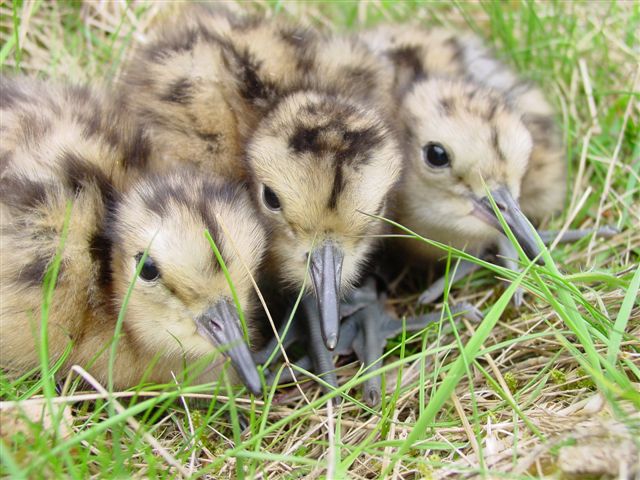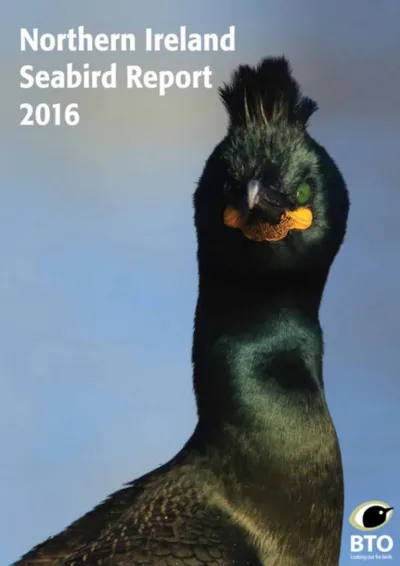BTO create and publish a variety of important articles, papers, journals and other publications, independently and with our partners, for organisations, government and the private sector. Some of our publications (books, guides and atlases) are also available to buy in our online shop.
Annual report of the Seabird Monitoring Programme
Seabird Population Trends and Causes of Change: 1986–2023
This report presents the latest seabird population trends in breeding abundance and productivity using data from the Seabird Monitoring Programme (SMP).
The report documents changes in the abundance and productivity of breeding seabird species in Britain and Ireland from 1986 to 2023, and provides a detailed account of the 2021, 2022 and 2023 breeding seasons.

Search settings
Effects of deer on woodland structure revealed through terrestrial laser scanning
Author: Eichhorn, M.P., Ryding, J., Smith, M.J., Gill, R.M.A., Siriwardena, G.M. & Fuller, R.J.
Published: 2017
Terrestrial laser scanning (TLS) captures the three‐dimensional structure of habitats. Compared to traditional methods of forest mensuration, it allows quantification of structure at increased resolution, and the derivation of novel metrics with which to inform ecological studies and habitat management.Lowland woodlands in the UK have altered in structure over the last century due to increased abundance of deer and a decline in management. We compared whole‐canopy profiles between woodlands with high (>10 deer km−2) and low deer density (c. 1 deer km−2), and in stands with and without records of management interventions in the last 20 years, providing a test case for the application of TLS in habitat assessment for conservation and management.Forty closed‐canopy lowland woodlands (height range 16·5–29·4 m) were surveyed using TLS in two regions of the UK, divided into areas of high‐ and low‐deer abundance, and between plots which had been recently managed or were unmanaged. Three‐dimensional reconstructions of the woodlands were created to document the density of foliage and stem material across the entire vertical span of the canopy.There was a 68% lower density of understorey foliage (0·5–2 m above‐ground) in high‐deer woodlands, consistent in both regions. Despite this, total amounts of foliage detected across the full canopy did not differ between deer density levels. High‐deer sites were 5 m taller overall and differed in the distribution of foliage across their vertical profile. Managed woodlands, in contrast, exhibited relatively minor differences from controls, including a lower quantity of stem material at heights from 2 to 5 m, but no difference in foliage density. All main effects were replicated equally in both regions despite notable differences in stand structures between them.Synthesis and applications. Terrestrial laser scanning allows ecologists to move beyond two‐dimensional measures of vegetation structure and quantify patterns across complex, heterogeneous, three‐dimensional habitats. Our findings suggest that reduction of deer populations is likely to have a strong impact on woodland structures and aid in restoring the complex understorey habitats required by many birds, whereas management interventions as currently practiced have limited and inconsistent effects.
11.04.17
Papers
Assessing behaviour of Lesser Black-backed Gulls from the Ribble and Alt Estuaries SPA using GPS tracking devices
Author: Scragg E S, Thaxter C B, Clewley G D, and Burton N.H.K.
Published: 2017
This report provides findings from the first year of a study that has used Movetech ‘GPS-GSM’ tracking devices to track the movements of Lesser Black-backed Gulls from a breeding colony at the Ribble and Alt Estuaries SPA and so investigate their use of the SPA and the Warton Aerodrome. The study had two main objectives: (i) to assess the flight altitudes of adult Lesser Black-backed Gulls from the breeding colony at Banks Marsh in the Ribble and Alt Estuaries SPA during the 2016 breeding season; and (ii) to assess the home ranges of adult Lesser Black-backed Gulls from this colony and their temporal and spatial overlap with the SPA and the area of potential risk of collision with aircraft.
10.04.17
Reports
Continuing influences of introduced hedgehogs Erinaceus europaeus as a predator of wader (Charadrii) eggs four decades after their release on the Outer Hebrides, Scotland
Author: Author(s): Calladine, J., Humphreys, E.M., Gilbert, L., Furness, R.W., Robinson, R.A., Fuller, R.J., Littlewood, N.A., Pakeman, R.J., Ferguson, J. & Thompson, C.
Published: 2017
07.04.17
Papers
A global threats overview for Numeniini populations: synthesising expert knowledge for a group of declining migratory birds
Author: Pearce-Higgins, J.W., Brown, D.J., Douglas, D.J.T., Alves, J.A., Bellio, M., Bocher, P., Buchanan, G.M., Clay, R.P., Conklin, J., Crockford, N., Dann, P., Elts, J., Friis, C., Fuller, R.A., Gill, J.A., Gosbell, K., Johson, J.A., Marquez-Ferrando, R., Masero, J.A., Melville, D.S., Millington, S., Minton, C., Mundkur, T., Nol, E., Pehlak, H., Piersma, T., Robin, F., Rogers, D.I., Ruthrauff, D.R., Senner, N.R., Shah, J.N., Sheldon, R.D., Soloviev, S.A., Tomkovich, P.S. & Verkuil, Y.I.
Published: 2017
Curlew, with their characteristic downward-curved bill and call evoking the wild British countryside, is a unique and much loved species. But these calls may not be echoing across our skies forever, and the problem is in no way confined to our shores. Seven out of the 13 wader species in the Numeniini (curlew and godwit) tribe are Near Threatened, Globally Threatened or Critically Endangered. This tribe’s ground-nesting habits (making them susceptible to predation), and long, perilous migrations across the globe leave them especially vulnerable. Numeniini also tend to favour specialist habitats, making them likely to decline further as these habitats disappear. Collaborative research led by the BTO identifies the main reasons for these declines and suggests conservation measures that could be implemented to halt them.
01.03.17
Papers

Northern Ireland Seabird Report 2016
Author: Leonard, K. & Wolsey, S.
Published: 2017
This is the fourth edition of the Northern Ireland Seabird Report, covering 2016. This report is the published outcome of the work of the BTO NI Seabird Coordinator, and the activities of the evolving Northern Ireland Seabird Network of volunteers and organisations, such as National Trust, Ulster Wildlife and the RSPB, that have provided data for 2016 and previous years.
01.03.17
Reports Northern Ireland Seabird Report
